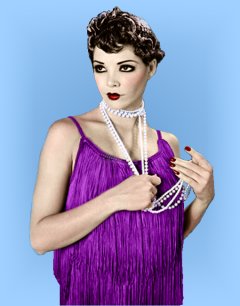Women's Dressing Patterns at the Turn of the Century
 |
| The image of the ideal woman |
Evolution of Ideas in the 1920s
 |
| Flapper |
The 1950s till 1980s
 |
| Marilyn Monroe and Grace Kelly |
Today's Woman and Going Forward
Today physical appearance has become the number one way we are valued in today's culture. Women want to look like the models or celebrities they see on television. The media gives women the pressure to look good and keep up with the trends. Women now feel the need to keep up with the new fashions, new hair and makeup trends. Today we find fit bodies and well taken care of faces to be beautiful. Women should care more about how they feel and being more comfortable instead of worrying about what everyone expects them to look like.
Works Cited
"1920s Women's Fashion." 1920s Fashion for Women. Just The Swing, n.d. Web. 24 Apr. 2014.
Toole, Lucinda. "Buying into Body Image | The Oxford Student." The Oxford Student. N.p., 06 Apr. 2014. Web. 24 Apr. 2014.
"Women's Body Image and BMI: 100 Years in the US." Rehabs.com. N.p., n.d. Web. 24 Apr. 2014.

No comments:
Post a Comment